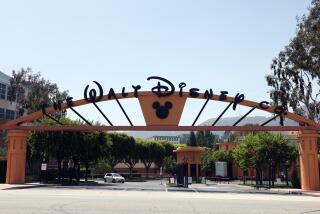The Shape of Things to Come? : GM Shake-Up a Case Study for Corporate Overhaul
- Share via
NEW YORK — General Motors’ high-profile management shake-up provides a case study for the concept of a “non-executive” chairman that will be closely monitored by corporate reformers.
The company’s board of directors Monday named one of their own, John G. Smale, as chairman, with the principal duty of overseeing and evaluating the day-to-day operating performance of President and Chief Executive Jack F. Smith Jr. In doing so, GM’s board chose a model long sought by corporate-governance experts.
Not surprisingly, Ira M. Millstein, a prominent New York attorney who has counseled GM’s board during the last six months, is an enthusiastic proponent of the idea, the thrust of which is to break up power at the top of big companies.
Millstein has written several books and dozens of articles and speeches about the way companies are run. He is chairman of the Institutional Investor Project at Columbia University, which studies the role of big pension funds in corporate affairs.
To regain America’s international competitiveness, Millstein believes, directors must act independently of entrenched corporate managers. If necessary, they must fire a poorly performing CEO.
That is easier said than done at most U.S. companies today, where the top executive consolidates the reins of the power with a troika of titles: chairman, president and CEO. According to a 1992 survey by the executive-search firm Korn/Ferry, 80% of companies queried reported that their CEO is also their chairman.
When such companies run into trouble, the owners of the business--the shareholders--can encounter Herculean obstacles if they try to push through reforms.
Theoretically, shareholders are represented by the board. But in practice, corporate titans too often nominate friends or passive executives as directors. Former GM shareholder Ross Perot denounced these directors as “pet rocks” when he sold back his block of shares to the company in disgust at the board’s inertia.
The academics, lawyers, regulators and big shareholders who favor a non-executive chairman contend that such a structure can go a long way toward restoring proper balance between managers and owners.
To do so at GM, the directors amended the company’s bylaws to define the chairman’s primary responsibility as simply “(oversight of) the performance of the corporation and of the executive management.”
Specifically, Smale must prepare the agenda for board meetings; provide “timely, appropriate and adequate” information to the board and its committees; coordinate selection of new directors, and evaluate the board’s effectiveness.
The new regulations describe Smith’s role as CEO as one responsible for “the conduct of the business and affairs of the corporation.”
DeWitt Bowman, chief investment officer of the California Public Employees Retirement System, the nation’s largest pension fund, supported the changes at GM. “Splitting the chairman and CEO should be tried more often, particularly in large and bureaucratic organizations,” he said. “A non-executive chair is important when trying to evaluate the performance of the CEO and management.”
Non-executive chairmen can be found in many British companies and throughout Europe. In a recent report in Britain, a group called the Cadbury Committee recommended that firms reinforce systems of management accountability by continuing to separate the positions of board chairman and CEO.
In the United States, a non-executive chairman is most familiar in private companies where family members make up the board and hire managers to work for them.
But shareholder activists have yet to succeed at persuading any companies to split the roles of chairman and CEO. The United Shareholders Assn. in Washington and the New York City Employees’ Retirement System proposed that Sears, Roebuck & Co. do so last spring but failed to command enough proxies to wrest away the chairmanship from Edward Brennan.
Ralph Whitworth, president of the shareholders group, predicts the following companies may face pressure from institutional investors to consider breaking up power at the top: Champion International, Citicorp, International Business Machines, Sears and Westinghouse.






